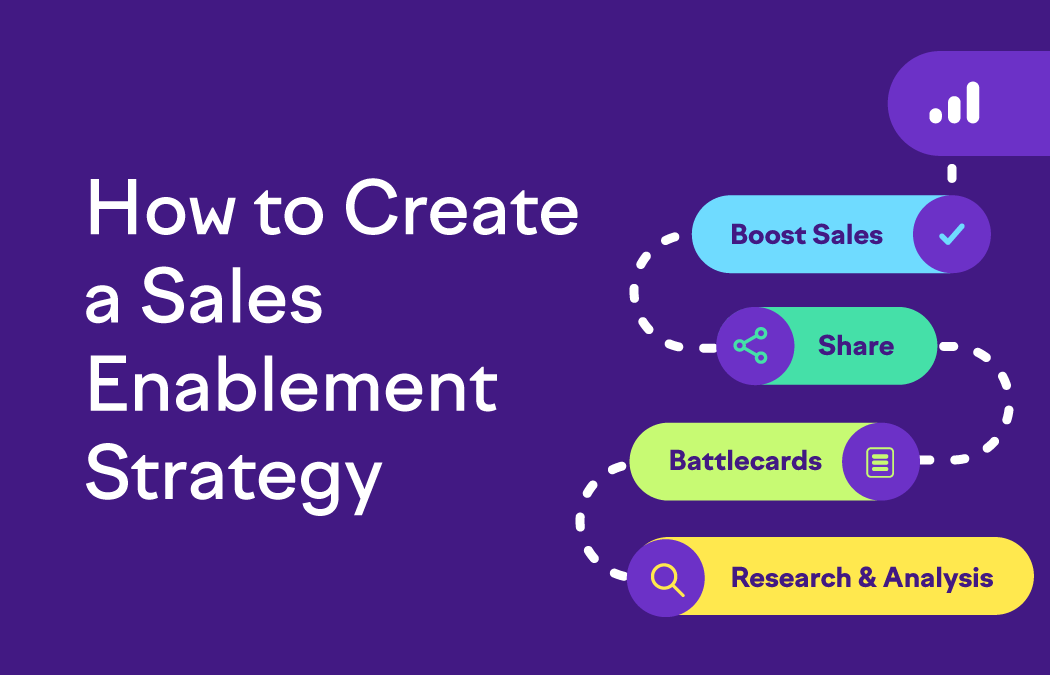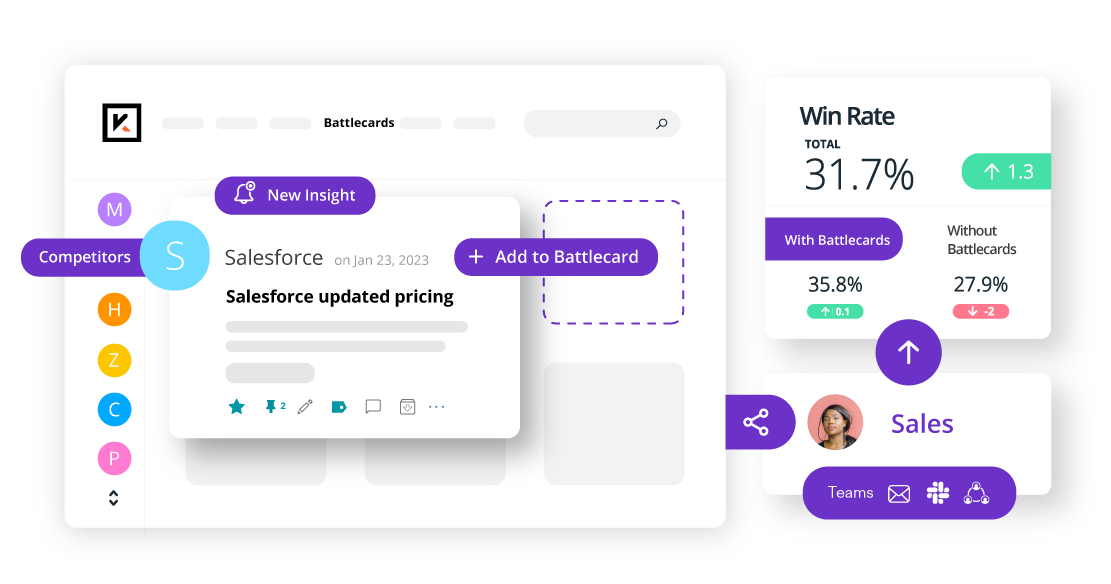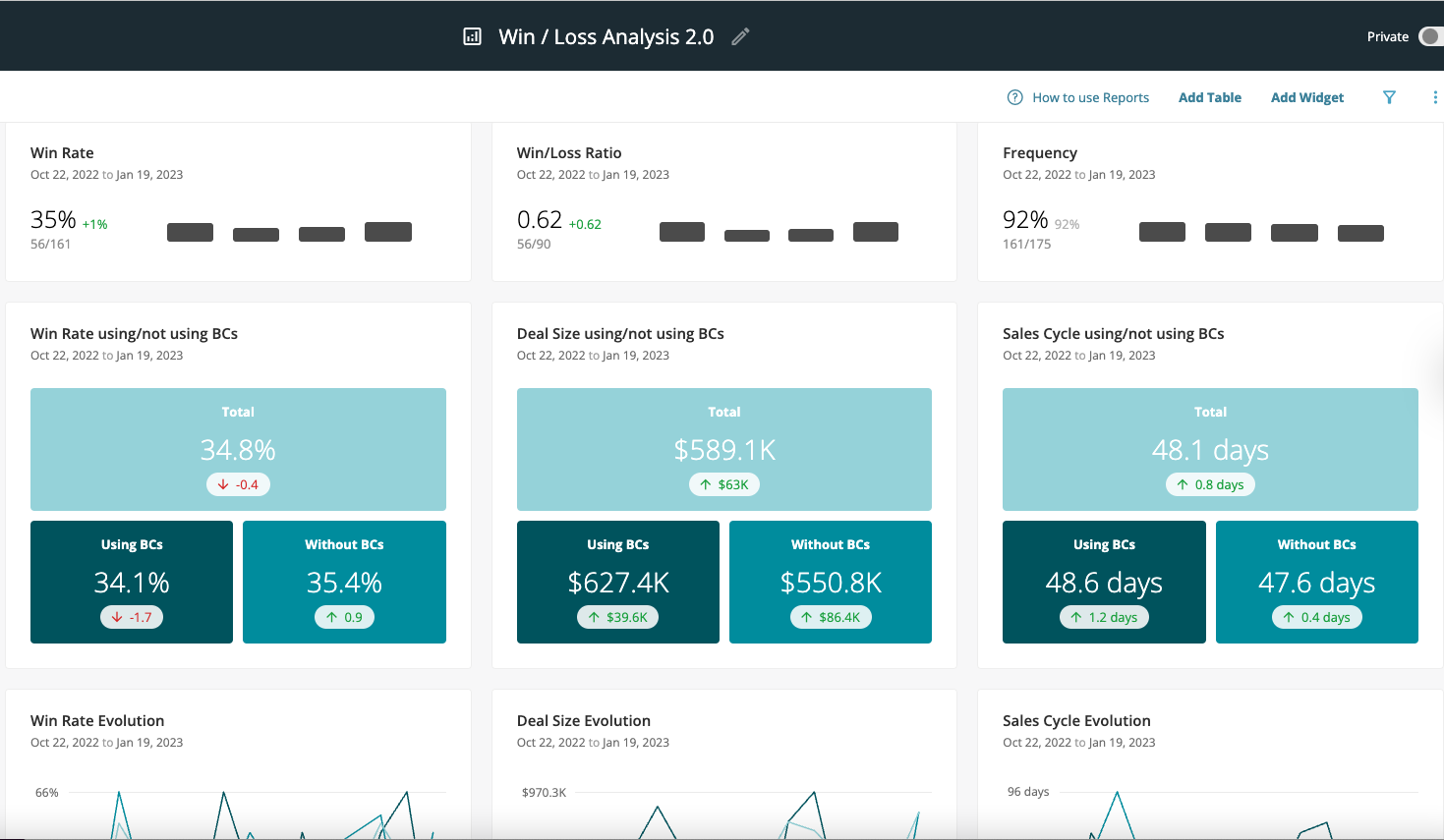Winning the Sales Battle with Battlecards
What is a sales Battlecard, how do salespeople use them, and what should they include? Read on for everything you need to know about an effective...
Learn how to create a comprehensive sales enablement strategy that empowers your sales team and drives revenue growth. Discover best practices and key tactics for building a successful plan.

Sales enablement is a critical aspect of any business's growth strategy. Done well, it increases win rates, shortens sales cycles, and increases deal sizes by providing sales teams with the training, resources, and tools they need to sell more effectively. However, creating a sales enablement strategy can be challenging, especially for those who are new to the field.
In this article, we’ll explore how to build a sales enablement strategy that sets your business up for success. We’ll also cover the components of sales enablement - training/coaching, assets, tools, strategy, and metrics.
Developing a sales enablement strategy is crucial for the success of any business. Gaining buy-in from your team and providing them with the right tools and resources will improve their performance and drive success for the business.
Additionally, monitoring competitor intelligence and measuring your sales enablement strategy's performance with tools like Kompyte will give you real-time insights and allow you to make data-driven decisions that will ultimately improve your sales outcomes and increase the bottom line of your business.
.jpg?width=2240&height=250&name=Untitled%20design%20(2).jpg)
The first step in creating a sales enablement strategy is to assess your current program and needs.
Once you clearly understand your current situation, you can set SMART goals for your sales enablement program. SMART goals are specific, measurable, attainable, relevant, and time-bound.
Then it’s time to decide which you’ll tackle first, what you’ll need to do to make progress, and who will be responsible for executing your plan. Make sure you schedule a time to review progress regularly.
Creating a sales enablement strategy with Kompyte can be done by identifying the specific needs of your sales team and understanding how they interact with leads and customers.
Kompyte's competitive intelligence automation software can provide your team with real-time insights into your competitors' activities and updates across various sources, including websites, reviews, content, social, ads, and job postings.
By using this data, you can create a strategy that provides your sales reps with the right resources and tools to effectively sell your product or service.
If you’re still deciding which software to use, here are a few of Kompyte’s benefits you won’t want to miss:

Without accurate measurement, you can’t see the impact of your sales enablement efforts, nor can you improve on them.
While you’ll be looking for improvement in all your sales-related metrics, you may want to prioritize these to meet your own goals. You can always shift focus once you’ve made progress where it matters most today. Some of these numbers include:


.jpg?width=2240&height=250&name=Untitled%20design%20(3).jpg) How Do You Set and Achieve SMART Sales Enablement Goals?
How Do You Set and Achieve SMART Sales Enablement Goals?Now that you know what you want to measure, you can track progress and make adjustments as needed in order to reach your goals. It is also important to ensure the goals are achievable, considering the resources and capabilities of your team.
Also, the goals should be relevant to the overall strategy and goals of the business and have a specific time frame for achieving them.
SMART goals are specific, measurable, attainable, relevant, and time bound.
Setting SMART goals for your sales enablement program will ensure that your team is working towards a clear and achievable target, which will ultimately improve your bottom line.
Example of a SMART goal:
Achieve a 5% increase (specific, attainable) in win rates (measurable, relevant) by April 1 (time bound) as measured by Kompyte win/loss analytics.
.jpg?width=2240&height=250&name=Untitled%20design%20(4).jpg) What Are the Components of Sales Enablement?
What Are the Components of Sales Enablement?The function of sales enablement includes training and coaching to help sales reps develop the skills to engage with prospects and customers.
It also includes sales software, competitive intelligence, and content - everything the sales team needs to effectively sell.
This type of content helps salespeople guide prospects toward making a purchase. It warms leads in your pipeline and encourages them to convert—plain and simple. Let’s look at some examples.
Competitor Battlecards: A sales enablement tool that provides competitive intelligence on a company's competitors, including a comparison of their strengths and weaknesses. These cards are used to equip salespeople with market insights and assist them in making informed decisions on product positioning. You can make your own with our free Battlecard template.
Sales Decks: Presentations that help salespeople explain the benefits and features of a product or solution to potential customers.
Customer Case Studies: Detailed accounts of how a company's products or solutions have helped solve specific problems for real customers.
One-pagers - Provide a high-level overview of a product or service
Product Data sheets: Technical and factual information about a company's products, including specifications, pricing, and compatibility information.
Sales Scripts: Step-by-step guides that help salespeople navigate the sales process, from the initial call to closing the deal.
Sales Playbooks: Customizable guides that outline the best practices and strategies for selling a particular product or solution.
One of the most important pillars of sales enablement is communication. Internally, you need to get buy-in from your sales team which means you need to articulate the benefits of sales enablement. And of course, if you can't communicate with your customers and prospects, you’ll never improve revenue no.
In the words of Will Yang, Head of Growth at Instrumentl, “If you can't communicate effectively, there's no way to make sure that your clients are getting the right information at the right time—and that's how you lose customers.”
But perhaps the most crucial pillar is competitive intelligence. After all, unless you know where you stand in comparison to your competitors, why you win, and what campaigns or messaging they are deploying, you’re losing sales.
If you’re using competitive intelligence automation, an hour or so a week can be sufficient for maintaining competitive intelligence programs, which can be maintained by multiple full-time employees. It is essential that your sales team has access to current insights, preferably in their existing sales tools.
.jpg?width=2240&height=250&name=Untitled%20design%20(5).jpg) Create a Winning Sales Enablement Strategy
Create a Winning Sales Enablement StrategyIn a nutshell, sales enablement comes in all shapes and sizes—which means there are dozens of metrics you can use to measure the success of your efforts.
So it’s no wonder creating a sales enablement content strategy can be challenging—there are lots of moving parts. However, it’s essential for any business that wants to grow. By setting SMART goals, gaining buy-in from teams, identifying the right tools and resources, and monitoring key performance indicators, you can create a strategy that sets your business up for success.
What is a sales Battlecard, how do salespeople use them, and what should they include? Read on for everything you need to know about an effective...
Objections are an all too common part of the sales process. Does your sales team know how to identify and handle those questions effectively?
Objections are inevitable in the sales process. But encountering an objection doesn’t have to be the end of the process. Learn how you can identify...
Be the first to know about new B2B SaaS Marketing insights to build or refine your marketing function with the tools and knowledge of today’s industry.